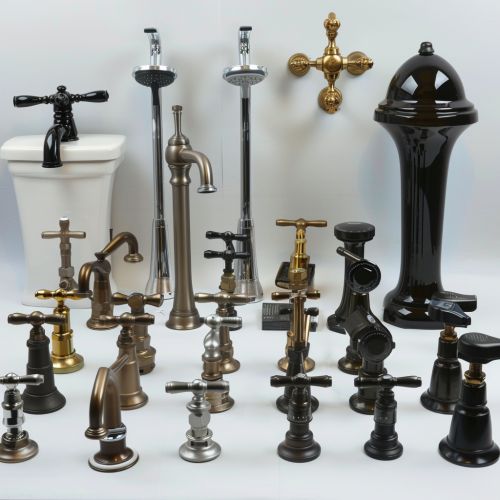Plumbing Fixtures
Introduction
Plumbing fixtures are devices that interface with the water supply system and are used to regulate the flow of water into a plumbing system. They are an integral part of any building's plumbing system, providing the means for controlling and directing the flow of water.


Types of Plumbing Fixtures
There are numerous types of plumbing fixtures, each designed for a specific purpose. The most common types include:
- Faucets: These are devices that control the flow of water from a pipe. They are typically used in sinks, bathtubs, and showers.
- Toilets: These are fixtures designed for the disposal of human waste. They are connected to a drain and a water supply, and have a flushing mechanism to dispose of the waste.
- Showers: These are fixtures that spray water for personal hygiene. They can be standalone fixtures or part of a bathtub.
- Bathtubs: These are large containers for holding water in which a person may bathe. They are typically equipped with a faucet and a drain.
- Sinks: These are bowls or basins that hold water. They are typically used for washing hands, dishes, and other small objects.
- Bidets: These are plumbing fixtures used for washing the genitalia, perineum, inner buttocks, and anus. They are common in Europe and Asia.
Materials Used in Plumbing Fixtures
Plumbing fixtures are made from a variety of materials, each with its own advantages and disadvantages. The most common materials include:
- Stainless steel: This is a highly durable material that is resistant to corrosion and staining. It is commonly used in sinks and faucets.
- Porcelain: This is a type of ceramic material that is often used in toilets and sinks. It is highly resistant to heat, electricity, and chemical damage.
- Plastic: This is a lightweight and inexpensive material that is often used in showerheads and certain types of pipes.
- Copper: This is a type of metal that is often used in pipes and faucets. It is highly resistant to corrosion and has antimicrobial properties.
Installation and Maintenance of Plumbing Fixtures
The installation of plumbing fixtures involves connecting them to the water supply and drain systems. This process requires a thorough understanding of the plumbing code, as well as the ability to use a variety of plumbing tools.
Maintenance of plumbing fixtures involves regular cleaning to prevent the buildup of mineral deposits and bacteria. It may also involve the replacement of parts that have worn out or become damaged.
Environmental Considerations
Many modern plumbing fixtures are designed to be more environmentally friendly. For example, low-flow faucets and showerheads can reduce water usage, while dual-flush toilets can save water by offering a lower-volume flush option. In addition, many fixtures are now made from recycled or sustainable materials.
